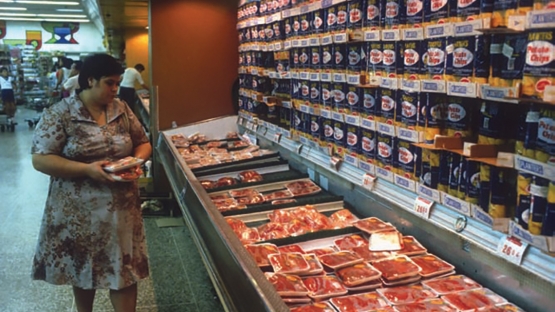Uruguayan beef has a good reputation – grass-fed cattle raised in the open under natural conditions, with an abundance of fresh feed and clean water. But in the world of international trade, good agricultural production practices are not enough to satisfy consumers and importers. They want certification that meat products meet international standards. Thanks to the support of the Joint FAO/IAEA Division of Nuclear Techniques in Food and Agriculture in strengthening the country’s Michael C. Rubino Veterinary Laboratory, which tests meat products, Uruguayan food producers can provide proof that their production is safe for consumers. This means ensuring that it does not contain any harmful residues of veterinary drugs or other contaminants. The Joint Division has similar projects throughout Latin America.
Uruguay entered the global meat export market in a big way in 1995 when it was declared free of foot-and-mouth disease by the World Organisation for Animal Health (OIE). Except for one outbreak near the Argentine border in 2001, Uruguay has remained free of the disease. It has established quality control labs and now exports beef worldwide, even to the highly controlled North American markets which now accept both its fresh and processed meat products.
The Joint FAO/IAEA Division of Nuclear Techniques in Food and Agriculture works throughout Latin America to help countries improve the proficiency of their meat control laboratories. If veterinary medicine must be used in livestock rearing, the Joint Division helps the countries adapt and apply the tests that will demonstrate that it has been used correctly. In the case of Uruguay, the beef it produced was actually residue free, but this could not be proven to importers until there was an approved laboratory system in place.
Today, the beef industry represents 6 percent of Uruguay’s gross national product with 80 percent of national production exported to some 80 countries. However, global meat trade has become increasingly competitive and food quality control and import-export standards increasingly stringent. Thus Uruguay’s livestock sector is highly committed to maintaining a state-of-the art certification system.
In 2010, the Joint Division began working with Uruguay to improve its laboratory facilities. It introduced a methodology that allows for multi-residue detection of antibiotics using mass spectrometry – a methodology developed in France but, with the support of the Joint Division, modified to meet Uruguay’s specific needs. Multi-residue analytical methods enable the more efficient and cost-effective detection of multiple veterinary drug residues in complex food matrices at the same time, which favorably compares to the onerous, expensive and time consuming traditional analyses of individual contaminants. Not only must measurements prove that meat products contain no contaminants, are safe for consumers and meet international standards, Uruguay also must prove that its methods of analysis and sampling are calibrated according to international protocols.



